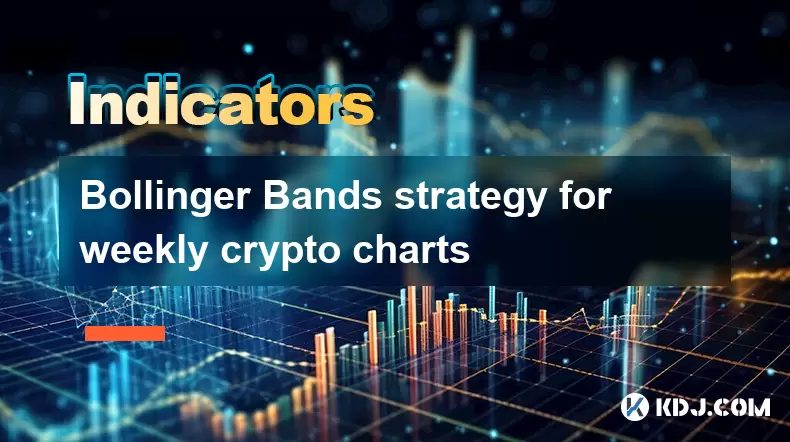-
 Bitcoin
Bitcoin $117,953.1650
-0.44% -
 Ethereum
Ethereum $3,404.6769
7.20% -
 XRP
XRP $3.2145
7.63% -
 Tether USDt
Tether USDt $1.0001
0.01% -
 BNB
BNB $717.7875
3.79% -
 Solana
Solana $175.1351
5.00% -
 USDC
USDC $0.9997
-0.02% -
 Dogecoin
Dogecoin $0.2140
6.36% -
 TRON
TRON $0.3125
3.78% -
 Cardano
Cardano $0.7984
6.61% -
 Hyperliquid
Hyperliquid $46.3875
-2.89% -
 Stellar
Stellar $0.4661
-1.97% -
 Sui
Sui $3.9769
-0.95% -
 Chainlink
Chainlink $17.0299
3.26% -
 Hedera
Hedera $0.2442
2.02% -
 Bitcoin Cash
Bitcoin Cash $494.1589
-0.49% -
 Avalanche
Avalanche $22.7305
3.32% -
 Shiba Inu
Shiba Inu $0.0...01429
3.24% -
 UNUS SED LEO
UNUS SED LEO $8.8207
-0.20% -
 Toncoin
Toncoin $3.2223
3.73% -
 Litecoin
Litecoin $99.4978
2.54% -
 Polkadot
Polkadot $4.1940
2.13% -
 Monero
Monero $341.6175
2.76% -
 Pepe
Pepe $0.0...01357
4.19% -
 Uniswap
Uniswap $8.8637
-2.74% -
 Bitget Token
Bitget Token $4.7017
0.48% -
 Dai
Dai $0.9998
-0.03% -
 Ethena USDe
Ethena USDe $1.0003
-0.04% -
 Aave
Aave $320.8518
-2.86% -
 Bittensor
Bittensor $428.9747
-1.94%
Bollinger Bands strategy for weekly crypto charts
Bollinger Bands on weekly crypto charts help identify long-term trends, overbought/oversold levels, and potential reversals by analyzing price action relative to volatility-based bands.
Jul 15, 2025 at 02:42 am

Understanding Bollinger Bands in Cryptocurrency Trading
Bollinger Bands are a popular technical analysis tool developed by John Bollinger. They consist of a moving average (typically a 20-period simple moving average) and two standard deviation bands plotted above and below the moving average. These bands dynamically adjust to price volatility, expanding during high volatility and contracting during low volatility. In the context of weekly crypto charts, this tool becomes especially useful for identifying long-term trends and potential reversal points.
The upper and lower bands are calculated by adding and subtracting two standard deviations from the moving average. This setup allows traders to visualize price extremes and assess whether the asset is overbought or oversold. In the highly volatile world of cryptocurrencies, Bollinger Bands provide a framework for evaluating price behavior in a broader time horizon.
Applying Bollinger Bands on Weekly Charts
When analyzing weekly charts, the Bollinger Bands strategy becomes more strategic than tactical. Unlike daily or hourly charts that offer short-term insights, weekly charts are used by traders who prefer a longer time horizon. The 20-week moving average with 2 standard deviations is the default setting, but traders may adjust it based on their trading style or specific asset behavior.
A key advantage of using weekly Bollinger Bands is the ability to filter out short-term noise and focus on significant price movements. For instance, when the price touches or moves outside the upper band, it might indicate overbought conditions, suggesting a potential pullback. Conversely, a touch of the lower band could signal oversold conditions, possibly heralding a rebound.
Identifying Entry and Exit Points
One of the core applications of Bollinger Bands is determining entry and exit points. In the case of weekly crypto charts, patience and discipline are essential. A common approach involves watching for price action near the bands and combining it with other confirming indicators.
- Touching the lower band might be a signal to consider buying, especially if supported by bullish candlestick patterns or positive volume.
- Touching the upper band could suggest a potential shorting opportunity, particularly if there's a bearish candlestick formation or declining volume.
- Price hugging the upper or lower band for multiple weeks may indicate a strong trend, and breakouts beyond the bands can signal a continuation of momentum.
It’s crucial to remember that Bollinger Bands alone are not sufficient for making trade decisions. Traders should incorporate volume indicators, RSI, or MACD to confirm signals and reduce false positives.
Managing Risk with Bollinger Band Squeezes
A Bollinger Band squeeze occurs when the bands contract tightly around the price, indicating low volatility. This situation often precedes a sharp price move, which is particularly relevant in the crypto market known for sudden volatility spikes.
On weekly charts, a squeeze can signal that a major move is imminent. However, the direction of the move is not guaranteed. To effectively manage risk:
- Monitor volume during the squeeze. A surge in volume often confirms the breakout direction.
- Place stop-loss orders just beyond the opposite side of the squeeze to protect against adverse moves.
- Use Fibonacci retracement levels to anticipate potential price targets after a breakout.
Traders should avoid entering positions during the squeeze itself and wait for a clear breakout confirmation before acting.
Combining Bollinger Bands with Other Indicators
To enhance the reliability of Bollinger Bands signals, especially on weekly crypto charts, it’s beneficial to combine them with other technical tools:
- Relative Strength Index (RSI): When the price touches the upper band and RSI is above 70, it may indicate overbought conditions. Conversely, a lower band touch with RSI below 30 could suggest oversold levels.
- MACD (Moving Average Convergence Divergence): This helps confirm trend direction and momentum. A bullish MACD crossover near the lower band can reinforce a buy signal.
- Volume indicators: Increasing volume during a breakout or breakdown from the bands can validate the strength of the move.
Using multiple indicators together helps filter out false signals and provides a more robust trading strategy.
Common Pitfalls and How to Avoid Them
Despite their usefulness, Bollinger Bands are not foolproof. Some common mistakes traders make include:
- Overreacting to price touching the bands: In strong trends, prices can ride the bands for extended periods without reversing.
- Ignoring the overall trend: Using Bollinger Bands without considering the broader trend can lead to poor decisions.
- Failing to adjust settings: The default 20-period setting may not suit all cryptocurrencies. Adjusting the period or standard deviation can improve accuracy.
To avoid these pitfalls:
- Always assess the context of the market before acting on a signal.
- Use trendlines or moving averages to identify the direction of the trend.
- Test different parameters on historical data to find what works best for a specific crypto asset.
Frequently Asked Questions
Q: Can Bollinger Bands be used for all cryptocurrencies?
While Bollinger Bands can technically be applied to any cryptocurrency, their effectiveness may vary based on market liquidity and volatility. Highly volatile or thinly traded assets may produce false signals more frequently.
Q: Should I always wait for a candle to close before acting on a Bollinger Band signal?
Yes, especially on weekly charts, waiting for the weekly candle to close before making a trade decision can help avoid premature entries and reduce the risk of false breakouts.
Q: What should I do if the price remains outside the bands for several weeks?
This could indicate a strong trend or a new trend formation. It’s essential to reassess the trend direction and possibly adjust your trading strategy to align with the new momentum rather than expecting a reversal.
Q: Are Bollinger Bands better suited for range-bound or trending markets?
Bollinger Bands work well in both types of markets but should be used differently. In range-bound markets, they help identify overbought and oversold levels. In trending markets, they assist in spotting continuation signals and dynamic support/resistance levels.
Disclaimer:info@kdj.com
The information provided is not trading advice. kdj.com does not assume any responsibility for any investments made based on the information provided in this article. Cryptocurrencies are highly volatile and it is highly recommended that you invest with caution after thorough research!
If you believe that the content used on this website infringes your copyright, please contact us immediately (info@kdj.com) and we will delete it promptly.
- C2 Blockchain, DOG Coins, and Acquisition: A Meme-Native Bitcoin Asset
- 2025-07-17 20:30:12
- DeFi Evolution: Hyperion, HYPE Token, and the Hyperliquid Ecosystem
- 2025-07-17 21:30:12
- BlockDAG's NO VESTING PASS: A Crypto Game Changer Amid CRO & ONDO Swings
- 2025-07-17 21:30:12
- Ethereum, Pepe, Crypto: Navigating the Wild West of Digital Assets
- 2025-07-17 20:30:12
- Ethereum ETF Skyrockets: Record-Breaking Inflows Signal Bullish Trend
- 2025-07-17 22:10:12
- SOL, Bounce, Trap: Decoding Crypto's Latest Moves
- 2025-07-17 22:10:12
Related knowledge

Advanced RSI strategies for crypto
Jul 13,2025 at 11:01am
Understanding the Basics of RSI in Cryptocurrency TradingThe Relative Strength Index (RSI) is a momentum oscillator used to measure the speed and chan...

Crypto RSI for day trading
Jul 12,2025 at 11:14am
Understanding RSI in the Context of Cryptocurrency TradingThe Relative Strength Index (RSI) is a momentum oscillator used to measure the speed and cha...

Crypto RSI for scalping
Jul 12,2025 at 11:00pm
Understanding RSI in the Context of Crypto TradingThe Relative Strength Index (RSI) is a momentum oscillator widely used by traders to measure the spe...

What does an RSI of 30 mean in crypto
Jul 15,2025 at 07:07pm
Understanding RSI in Cryptocurrency TradingRelative Strength Index (RSI) is a momentum oscillator widely used in cryptocurrency trading to measure the...

What does an RSI of 70 mean in crypto
Jul 13,2025 at 06:07pm
Understanding the RSI Indicator in Cryptocurrency TradingThe Relative Strength Index (RSI) is a widely used technical analysis tool that helps traders...

Does RSI work in a bear market for crypto
Jul 16,2025 at 01:36pm
Understanding RSI in Cryptocurrency TradingThe Relative Strength Index (RSI) is a momentum oscillator used by traders to measure the speed and change ...

Advanced RSI strategies for crypto
Jul 13,2025 at 11:01am
Understanding the Basics of RSI in Cryptocurrency TradingThe Relative Strength Index (RSI) is a momentum oscillator used to measure the speed and chan...

Crypto RSI for day trading
Jul 12,2025 at 11:14am
Understanding RSI in the Context of Cryptocurrency TradingThe Relative Strength Index (RSI) is a momentum oscillator used to measure the speed and cha...

Crypto RSI for scalping
Jul 12,2025 at 11:00pm
Understanding RSI in the Context of Crypto TradingThe Relative Strength Index (RSI) is a momentum oscillator widely used by traders to measure the spe...

What does an RSI of 30 mean in crypto
Jul 15,2025 at 07:07pm
Understanding RSI in Cryptocurrency TradingRelative Strength Index (RSI) is a momentum oscillator widely used in cryptocurrency trading to measure the...

What does an RSI of 70 mean in crypto
Jul 13,2025 at 06:07pm
Understanding the RSI Indicator in Cryptocurrency TradingThe Relative Strength Index (RSI) is a widely used technical analysis tool that helps traders...

Does RSI work in a bear market for crypto
Jul 16,2025 at 01:36pm
Understanding RSI in Cryptocurrency TradingThe Relative Strength Index (RSI) is a momentum oscillator used by traders to measure the speed and change ...
See all articles

























































































